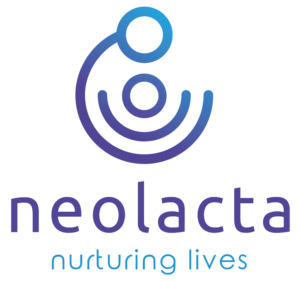Breastfeeding is a fundamental aspect of nurturing new-borns, offering a
multitude of benefits for both mothers and infants alike. Breastfeeding establishes a unique
bond between mother and child, providing essential nutrients and antibodies crucial for the
infant’s growth and development. Despite its numerous benefits, breastfeeding can present
challenges for new mothers. From latch issues and engorgement to concerns about milk
supply and discomfort, navigating these obstacles can be overwhelming for new moms.
However, with the right guidance and support, many of these challenges can be overcome,
allowing mothers to experience the joys of breastfeeding successfully.
The Benefits of Breastfeeding: Breastfeeding offers a plethora of health benefits for
both the baby and the mother, making it an invaluable practice in nurturing infants. Let’s
explore some of the key advantages:
Benefits of Breastfeeding for Babies
Optimal Nutrition: Breast milk contains a perfect balance of nutrients, proteins, and
fats that are essential for a baby’s growth and development. It provides all the
vitamins and minerals necessary for a strong start in life.
Immune System Support: Breast milk is rich in antibodies and immune-boosting
substances that help protect babies from infections, illnesses, and allergies. It
provides natural immunity against a wide range of diseases, reducing the risk of
respiratory infections, gastrointestinal issues, and more.
Digestive Health: Breast milk is easily digestible, making it gentle on a baby’s
delicate stomach. It helps prevent constipation, diarrhea, and other digestive
problems commonly seen in formula-fed infants.
Benefits of Breastfeeding for Mothers
Bonding Experience: Breastfeeding fosters a deep emotional bond between mother
and baby. The intimate act of nursing promotes feelings of closeness, comfort, and
security, strengthening the mother-infant relationship.
Faster Recovery: Breastfeeding triggers the release of hormones that promote
uterine contractions, aiding in postpartum recovery. It helps the uterus return to its
pre-pregnancy size more quickly and reduces the risk of postpartum bleeding.
Lower Risk of Health Issues: Breastfeeding has been linked to a reduced risk of
certain health conditions for mothers, including breast cancer, ovarian cancer, type 2
diabetes, and cardiovascular diseases. It also promotes weight loss and helps
mothers return to their pre-pregnancy shape.
Common Breastfeeding Challenges
Breastfeeding, while natural, can come with its own set of challenges for new mothers. Here
are some of the most common issues that breastfeeding mothers may encounter:
Latch Issues:
- Difficulty achieving a proper latch can lead to ineffective milk transfer and nipple pain.
- Causes may include improper positioning, tongue tie, or flat/inverted nipples.
Engorgement:
- Swelling and discomfort of the breasts due to an overabundance of milk.
- Occurs when milk production exceeds the baby’s consumption, typically in the early postpartum period.
Low Milk Supply:
- Insufficient milk production to meet the baby’s needs leads to concerns about inadequate nutrition.
- Causes may include hormonal imbalances, ineffective milk removal, or certain medications.
Nipple Pain and Cracking
- Soreness, tenderness, or cracking of the nipples, is often associated with improper latch or friction.
- Can be painful and may hinder breastfeeding sessions.
Breast Infections:
- Infections such as mastitis, are characterized by breast pain, redness, and fever.
- Occur due to bacterial growth in the breast tissue, often as a result of milk stasis or blocked ducts.
Breastfeeding Aversion:
- Feelings of discomfort, anxiety, or aversion towards breastfeeding, may arise for various reasons.
- Can negatively impact the breastfeeding relationship and cause distress for both mother and baby.
Overactive Let-down:
- Forceful ejection of milk from the breast, can overwhelm the baby and lead to choking, gulping, or fussiness during feedings.
- May result in gassiness, colic, or difficulty maintaining a proper latch.
Breastfeeding While Working:
- Balancing the demands of breastfeeding with returning to work or other responsibilities.
- Requires planning, support, and access to facilities for expressing and storing breast milk.
- Tips for Overcoming Breastfeeding Challenges:
Seek Professional Guidance:
- Consult with a lactation consultant or healthcare provider for personalized support and advice tailored to your specific breastfeeding challenges.
- Lactation consultants can assess latch issues, evaluate milk supply, and provide practical techniques to improve breastfeeding success.
- Healthcare providers can offer medical interventions and guidance, especially in cases of breastfeeding complications or concerns.
Establish a Support System:
- Surround yourself with supportive family members, friends, and peers who understand and encourage your breastfeeding journey.
- Join local support groups or online communities where you can connect with other breastfeeding mothers, share experiences, and seek advice.
Practice Proper Latching Techniques:
- Ensure your baby is properly latched onto the breast to optimize milk transfer and minimize nipple pain.
- Seek assistance from a lactation consultant or healthcare provider if you encounter difficulties with latching.
Address Milk Supply Concerns:
- Breastfeed or pump frequently to stimulate milk production and maintain adequate milk supply.
- Stay hydrated, eat a balanced diet, and prioritize self-care to support optimal milk production.
- Consider herbal supplements or lactation teas under the guidance of a healthcare provider to naturally boost milk supply.
Manage Breastfeeding Discomfort:
- Use lanolin or nipple cream to soothe sore nipples and prevent cracking.
- Apply warm compresses or take warm showers to relieve engorgement and promote milk flow.
- Experiment with different breastfeeding positions to find what is most comfortable for you and your baby.
Practice Patience and Persistence:
- Understand that breastfeeding challenges are common and may take time to resolve.
- Be patient with yourself and your baby as you navigate the learning curve of breastfeeding.
- Seek support and guidance whenever needed, and celebrate your successes along the way.
Establishing a Breastfeeding Routine – Tips for New Moms
Establishing a breastfeeding routine early on can help you and your baby get into a rhythm that supports both of your needs. Here are some simple tips to help you establish a breastfeeding routine:
Feed on Demand:
- Respond promptly to your baby’s hunger cues, such as rooting, sucking on fists, or fussiness.
- Breastfeed whenever your baby shows signs of hunger, rather than adhering to a strict schedule.
Frequent Nursing Sessions:
- In the early weeks, aim to breastfeed your baby frequently, typically every 2-3 hours, or whenever they seem hungry.
- Frequent nursing helps stimulate milk production and ensures your baby receives enough nourishment.
Skin-to-Skin Contact:
- Practice skin-to-skin contact with your baby during breastfeeding sessions.
- Skin-to-skin contact promotes bonding, regulates your baby’s temperature, and enhances breastfeeding success.
Comfortable Breastfeeding Environment:
- Create a comfortable and relaxing environment for breastfeeding.
- Find a quiet spot where you can sit comfortably with good back support, and keep essential items like water, snacks, and burp cloths within reach.
Alternate Breastfeeding Positions:
- Explore various breastfeeding positions to discover the most suitable ones for you and your baby.
- Popular positions include the cradle hold, cross-cradle hold, football hold, and side-lying position.
Burp Your Baby:
- Take breaks during breastfeeding to burp your baby, especially if they seem gassy or fussy.
- Burping helps release trapped air and prevents discomfort during and after feedings.
Monitor Diaper Output:
- Keep track of your baby’s diaper output to ensure they are getting enough breast milk.
- In the first few days, expect at least one wet diaper and one stool per day, increasing to several wet and soiled diapers as your milk supply establishes.
Proper Nutrition and Hydration
Prioritize nutrient-dense foods: Incorporate a variety of fruits, vegetables, whole grains, lean
proteins, and healthy fats into your diet to ensure you’re getting the essential vitamins and
minerals needed for breastfeeding.
- Stay hydrated: Drink plenty of fluids throughout the day, especially water, to
maintain hydration levels and support optimal milk production. - Snack smartly: Keep nutritious snacks like nuts, fruits, yogurt, and whole-grain
crackers on hand for quick and convenient energy boosts between meals. - Avoid caffeine and alcohol: Avoid intake of caffeine and alcohol, as these
substances can pass into breast milk and affect your baby’s sleep patterns and
development. - Take prenatal vitamins: Continue taking prenatal vitamins or a postnatal
multivitamin to fill any nutritional gaps and support your health while breastfeeding. - Listen to your body: Pay attention to hunger and thirst cues, and eat regular meals
and snacks to keep energy levels up and maintain milk supply.
Emotional Well-being and Breastfeeding – Nurturing Both Body and Mind: - Breastfeeding is not only a physical act but also an emotional journey that can bring
a mix of joy, fulfillment, and challenges for new mothers. While much emphasis is
placed on the physical aspects of breastfeeding, it’s equally important to address the
emotional well-being of mothers navigating this experience. - The emotional aspect of breastfeeding challenges can manifest in various ways. New
moms may feel overwhelmed by the demands of breastfeeding, especially in the
early weeks when sleep deprivation and hormonal changes are common. They may
experience feelings of frustration, guilt, or inadequacy if they encounter difficulties
such as latch issues, low milk supply, or breastfeeding aversion. - In light of these emotional challenges, new moms must prioritize self-care and seek
emotional support. Self-care can take many forms, from ensuring adequate rest and
nutrition to engaging in activities that bring joy and relaxation. Taking breaks when
needed, asking for help from partners or loved ones, and practicing self-compassion
are all essential aspects of self-care during the breastfeeding journey. - Furthermore, seeking emotional support from healthcare providers, lactation
consultants, or support groups can provide invaluable reassurance and guidance.
Connecting with other breastfeeding mothers who may be experiencing similar
challenges can offer a sense of camaraderie and understanding.
Celebrating Achievements in Breastfeeding:
Recognizing and celebrating small victories along the breastfeeding journey is crucial for
fostering a positive mindset and self-compassion. Each milestone, from successful latching
to overcoming challenges, deserves acknowledgment. Celebrating these achievements not
only boosts confidence but also encourages resilience and kindness towards oneself. By
embracing a positive attitude and celebrating progress, mothers can navigate the ups and
downs of breastfeeding with grace and determination, ultimately nurturing a strong bond with
their baby.
Conclusion
Navigating common breastfeeding challenges can be a rollercoaster of
emotions for new moms, filled with highs and lows. It’s essential to remember that every
hurdle overcome is a testament to your strength and dedication as a mother. By seeking
support, practicing self-care, and staying resilient, you can overcome any obstacles that
come your way on this journey. Embrace the small victories, lean on your support system,
and trust in your ability to provide the best nourishment and care for your baby. Remember,
you’re not alone in this journey, and with time and patience, you will find your rhythm and
experience the immense joy and fulfillment that breastfeeding can bring. Trust in yourself,
believe in the process, and cherish every precious moment with your little one.
References
- https://neolacta.com/navigating-common-breastfeeding-challenges/
- Blog on Breastfeeding, Webmd. Medically Reviewed by Jabeen Begum, MD on
December 14, 2023 Written by Rebecca Buffum Taylor, Katie Cameron
https://www.webmd.com/parenting/baby/nursing-basics - https://www.unicef.org/parenting/food-nutrition/5-common-breastfeeding-problems




